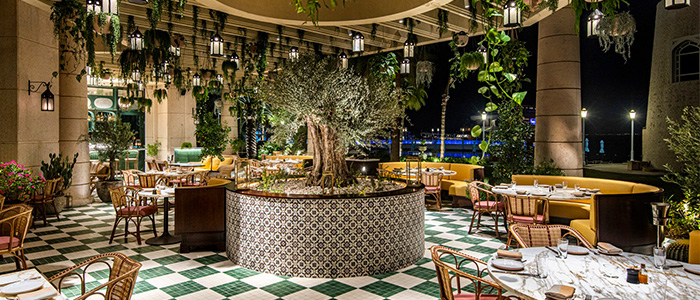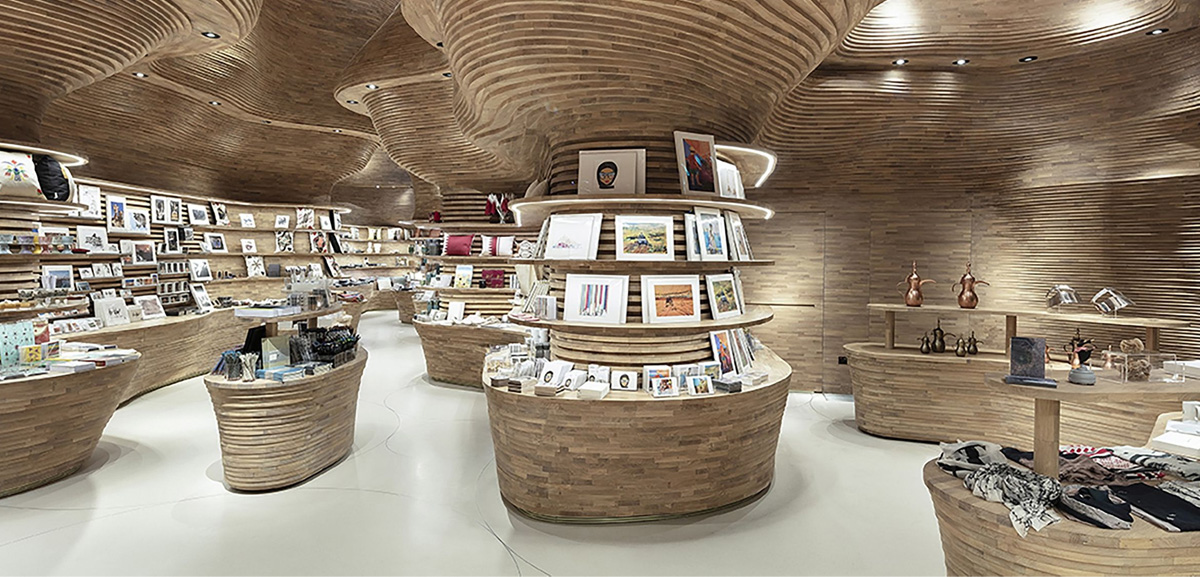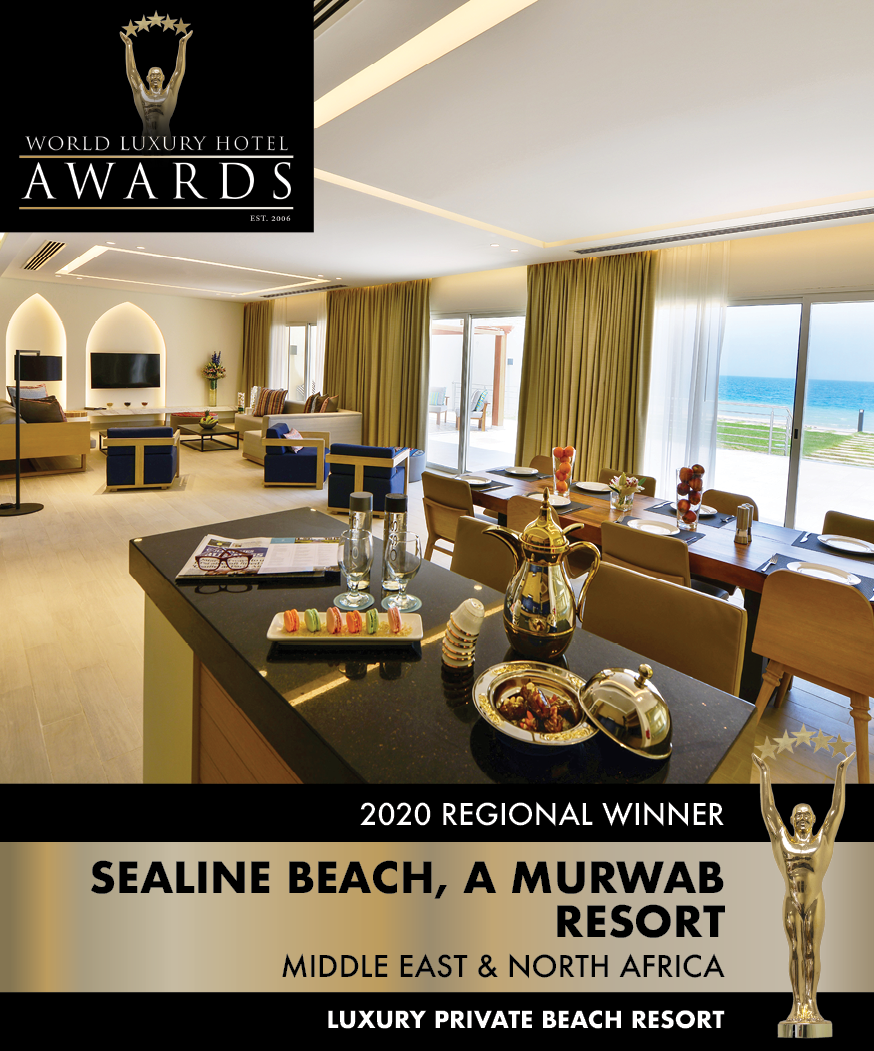The location is not as ominous as it sounds. It is actually a beautiful place which nestles between the spectacular snow-capped mountains of the Andes and the famous Beagle Channel and is the main departure point for cruises to Antarctica. It’s worth arriving a day or two early to explore this interesting frontier town and decompress from long flights. The best place to do this is at the Arakur Ushuaia Resort & Spa, a member of The Leading Hotels of the World. At this luxurious, relaxing retreat with awe-inspiring views above the city of Ushuaia, we enjoy spa treatments and indoor-outdoor pools and hot tubs filled with heated glacier water while taking in the panoramic scenery of the Beagle Channel, the snowcapped mountains, and the city. This is the perfect spot to rest and rejuvenate after long flights and to begin a dream journey to the ends of the earth.
It’s not quick or easy getting to Antarctica, but these days it’s nothing like what polar pioneers Amundsen, Scott and Shackleton had to go through to get to the frozen seventh continent at the bottom of the world. Today’s travelers can cross the notorious Drake Passage that spans from the tip of South America to the Antarctic Peninsula in comfort and luxury. We have chosen Hurtigruten’s MS Fram because of the Norwegian company’s impeccable expertise and long history of polar exploration dating back to 1893. Others have chosen the Fram because it was featured in Discovery Channel’s Mighty Ships series. It was the Norwegian expedition team led by Roald Amundsen that was first to reach the geographic South Pole in 1911 and, in fact, it was the original Fram that brought them to Antarctica in 1910.
We embark on our Antarctic voyage with a champagne toast in the Fram’s Panorama Lounge on Deck 7 where we are introduced to the ship’s officers and our Expedition team that will offer lectures at sea and guide us ashore on landings. There is also a National Geographic photographer on board documenting our journey and offering photography classes for beginners to experts.
Heading east from Ushuaia through the Beagle Channel we pass the small town of Puerto Williams, Chile — the last civilization we will see. There are neither native inhabitants nor permanent residents in Antarctica which is the size of the U.S. and Mexico combined – only about 4,000 people working on scientific bases dotted around the continent in the short summer period from November to March. Being the coldest place on Earth, Antarctica supports no terrestrial mammals and there are no trees or plants. It is the sea that supports the creatures that live here including penguins, seals, whales and sea birds. Given its isolation, it is the most pristine natural environment on the planet.
In the morning we pick up our complimentary expedition jackets and our day is spent at sea with lectures offered about how to minimize our impact, whales, and the sea birds we are seeing as we cross the Drake Passage. Antarctic sea birds include the Wandering Albatross with an average wingspan of over 10 feet, the largest of any bird in the world! Everything in Antarctica is larger than life. After a sit down dinner in the evening, a screening of the documentary film “South” about Ernest Shackleton’s Endurance Expedition is shown. This is fascinating old footage from 1914–17 actually documenting their journey.
The next morning the seas have subsided and we are met with bright sunshine as we approach the Antarctic peninsula. No sooner did we sit down to breakfast that we spotted our first whale blowholes. The ship’s dining room offers great views and a balcony off the back for taking pictures when wildlife shows up during a meal. After breakfast we spot our first iceberg and now we can feel the excitement building among our fellow passengers. We are fitted for Muck Boots that we will keep for the duration of the voyage and store on racks in the boot room sorted by cabin numbers. There is also a mandatory IAATO briefing telling us the rules and regulations for landings that include no more than 100 passengers on land at one time. Fortunately our intimate ship is carrying just 200 passengers which allows us almost maximum amount of time ashore as well as maximum number of landings per day that bigger ships can’t offer.
Almost two days away from Ushuaia, we arrive at Elephant Island. Here in 1916 British explorer Ernest Shackleton’s crew survived the dead of winter and near starvation after losing their ship ‘Endurance’ in the ice. Inevitably we think of the Fram’s reinforced hull, bountiful meals, and comfortable furnishings. Conditions don’t allow for landings today so we tour the area in the ship’s Polarcirkel boats. Hurtigruten uses these boats instead of inflatable rib boats because hard plastic makes it easier to push through ice. Using binoculars we get closer looks at the elephant seals that give the island its name as well as a colony of Macaroni penguins with their yellow eyelashes. At Point Wild, a colony of hardy Chinstrap penguinslive high atop dramatic rocky peaks and a bronze statue of Captain Luis Pardo, commanding officer of the Chilean Navy ship Yelcho that rescued Shackleton’s men, stands watching over them.
Iceberg Alley
The next morning I awake early to the most spectacular sight I’ve ever seen. We are gliding through the Antarctic Sound, aka “Iceberg Alley” where we pass the most impressive array of icebergs anywhere on earth — some the size of aircraft carriers. Absolutely incredible! We continue and reach Brown Bluff, an ominous 2,450 foot volcanic cliff, which lies on the coast of the Antarctic Sound and is home to Gentoo and Adélie penguin colonies. Here we make our first landing on the Antarctic mainland as a parade of penguins waddle along the stony beach to greet us – what an amazing welcome to my milestone seventh continent!
Kayaking at Brown Bluff
Esperanza Base
Later the ship receives a special invitation to visit the Argentine military base ‘Esperanza‘ that was established at Hope Bay in the Antarctic Sound in 1951. In the late 1970’s, they began bringing families to live here year-round and the first Antarctic birth was recorded here in 1978. Brightly painted orange buildings are dotted in the landscape including a museum, school house, chapel, community center, and scientific laboratories. Penguins live here too and we see them meandering all around the property. We end the day with a soak in the ship’s hot tubs outside on Deck 7 as we continue floating through the Antarctic Sound surrounded by icebergs as far as the eye can see. A spectacular end to the day!
Whaler’s Bay, Deception Island
Antarctic itineraries can change daily depending on conditions so there is no set itinerary that you would normally have on other cruises. Every day in Antarctica is an amazing surprise. Today we arrive at Deception Island which is the caldera of an active volcano that last erupted in the late 1960s. The center of the island is collapsed and flooded creating one of the safest harbors in Antarctica known as Port Foster. Ships have access to the interior of this doughnut-shaped island through a narrow entrance of just 330 feet known as Neptune’s Bellows. Once we enter through the Bellows, Whalers Bay begins to appear off the starboard side of the ship.
Whalers Bay has a sad history of whale and seal slaughter so it is fitting that the island is shrouded in clouds today giving it an ominous and mystical feeling. We see pods of penguins leaping through the water and the remains of the old whaling station on the shore. A cluster of rusted storage silos reminds me of a modern day Frank Gehry building. We pass skeletons of whales and boats that are strewn along the black sand beach as we walk towards Neptune’s Window to take in the dramatic cliff views on the other side. On our way back, a lone chinstrap penguin approaches us with curiosity and poses for pictures as some brave passengers take the opportunity to go swimming in the frigid waters. After Whalers Bay we move to another location within the caldera called Telefon Bay where we go on an amazing hike around a crater that feels like we’re on top of the world.
Hiking the crater at Telefon Bay
Best Wake Up Call Ever! It is 4:00am and we hear an announcement over the ship’s sound system that Orcas have been spotted. I jump out of bed, bundle up quickly, and rush out on deck to an amazing sight of a pod of the killer whales hunting for food amidst a sea of ice. The sun doesn’t set at this time of year so the light early this morning is surreal with the sun blazing through a long narrow split in clouds.
Orcas hunting for food
4:00 am sunshine
After the excitement is over we continue floating through a sea of ice and I see two seals on an ice floe looking up at me, and then some penguins on another. We pass the Chilean Base Station ‘Gonzalez Videla’ surrounded by a penguin colony where the ship has to use its ice breaking capabilities to push through the ice. We land at Base Brown, another Chilean station. Tonight some passengers take the opportunity to go camping on Antarctica. When we come back to pick them up the next morning I notice the scale of the mountains and glacier behind them is mind boggling.
Can you spot the campers?
Another stop is Cuverville Island — a penguin paradise where the adorable creatures are swimming, sliding down hill on their bellies, walking up and down hills in their penguin highways and approaching us with curiosity. I also see some penguins diving one by one into the sea with the last one nervously pacing back and forth before finally diving in, too.
In the afternoon we are cruising the Errera Channel — a scenic, narrow waterway where the icy water glistens like diamonds. I spot a star-shaped iceberg with turquoise gleaming from below. We also visit Mikkelsen Harbor, a photogenic little rocky island with a Gentoo penguin colony and historic whaling remnants including whale bones.
Evening arrival at Port Lockroy; the ship had to push through the ice to arrive.
Port Lockroy bedroom
The ship’s captain has been keeping an eye out for the optimum time for us to reach famous Port Lockroy because it has been surrounded by ice and unreachable so far during our journey. Port Lockroy has the only souvenir shop and post office on Antarctica so everyone has been anticipating a visit here. This evening an opportunity opens up for us to make it there around 8:00pm. It takes quite the maneuvering and breaking through of ice to get us there. The ship’s crew and expedition team are truly amazing. We have to wade through water in our tall Muck Boots to get to shore and some team members even carry some people piggy-back. It is evening and it seems that many penguin couples are in a romantic mood as we see them mating. Port Lockroy base is manned by just 4-5 staff members and is part of the UK Antarctic Heritage Trust. It feels bizarre to be walking through the different rooms of the base which have been preserved exactly how they were in the 1940s.
Double heart-shaped ice floe
Neumayer Channel with water like glass
The next morning we cruise the Neumayer Channel from Port Lockroy — a fjord with water like glass. We arrive at Neko Harbour in Andvord Bay. Once inside the bay, we are surrounded on all sides by the mountains and alpine glaciers of the peninsula. The bay is splendidly scenic and fills with castellated icebergs and wildlife in the long days of the summer. We hike up the hill to a penguin rookery with an amazing view high above the glacier which is heavily crevassed and very active creating impressive (but dangerous) waves when it calves. We have to be careful to stay off the beach and to keep a watch on our landings so we’re not caught off guard with waves that could possibly flood the Polarcirkel boats.
Crown-shaped iceberg
Arguing seals at Yankee Harbor
On our last day, we visit Yankee Harbor with a large u-shaped spit of land that is so perfectly shaped it looks man-made. Here we encounter the most seals we’ve seen so far and a Gentoo penguin colony where all the penguins are now sitting and nesting. Next month the babies will hatch. It’s curious that seals eat penguins in the water but on land they live side by side.
Half Moon Island is our final stop – it is a 1.2 mile long crescent-shaped island in the shadow of the picturesque mountains and glaciers of nearby Livingston Island. It is a favored expedition stop for its large chinstrap penguin colony, as well as stunning island scenery. The serrated and crevassed cliffs are also home to Antarctic terns, kelp gulls, snowy sheathbills, and Wilson’s storm petrels. The landing is on a wide pebbly beach where an abandoned old boat lays decaying. We walk up the hill to the chinstrap colony and we spot an amazing sight – a lonely macaroni penguin standing among the rookery of chinstraps. The expedition team tells us that he has been here for at least 15 years. From up here on the hill there are magnificent views of Livingston Island and humpback whales can be spotted breeching in the water between the two islands.
Lonely Macaroni penguin at Half Moon Island
Chinstrap penguin protecting her egg on Half Moon Island
Back at the ship there is a feeling of sadness as we hang up our Muck Boots for the last time. I thought of Antarctica as a once in a lifetime journey but now I want to come back again and again. As one of the expedition team members put it “you get hooked on it.”
Landing on the beach at Half Moon Island, view of Livingston Island in the background
All photos © Christine Gray, with the exception of the top lead photo by Hurtigruten.
WHEN YOU GO:
Hurtigruten Antarctica Cruises: https://www.hurtigruten.us/destinations/antarctica/
By Christine Gray
Source: www.luxurytravelmagazine.com





























Leave A Comment
You must be logged in to post a comment.